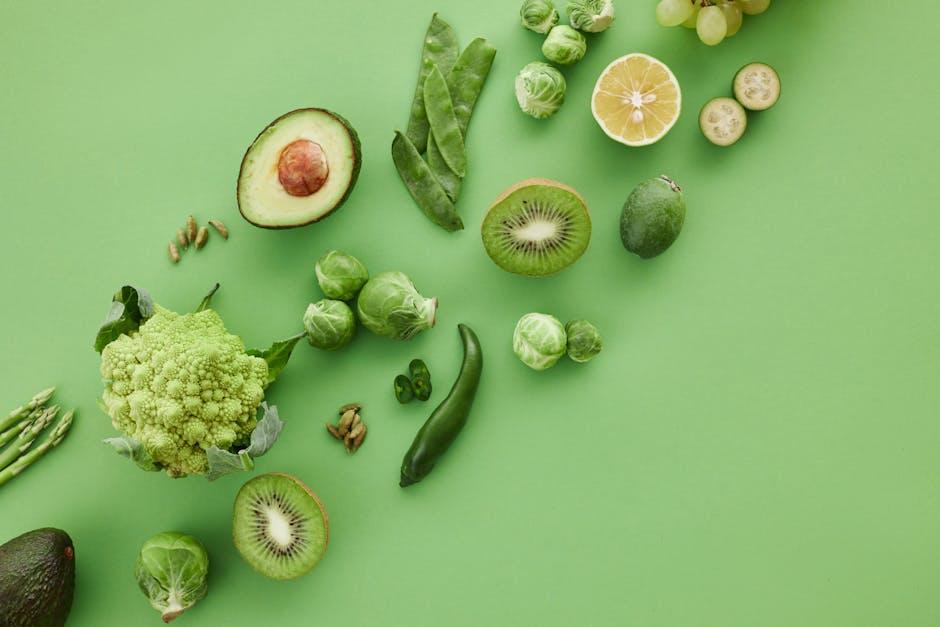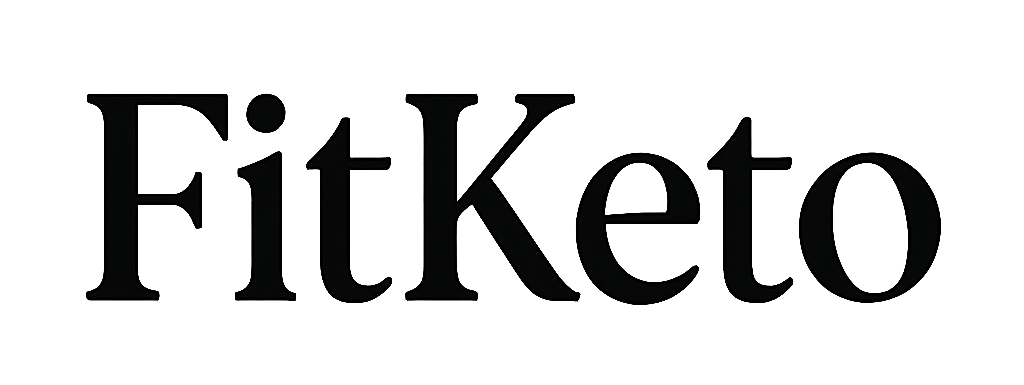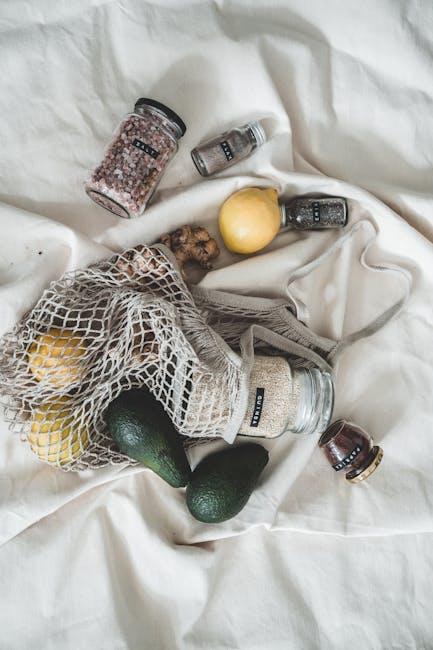Embarking on a keto lifestyle can feel like navigating a labyrinth of pricey specialty foods and unfamiliar ingredients. But maintaining a low-carb, high-fat diet doesn’t have to break the bank. With a thoughtful approach to shopping and a focus on versatile, affordable staples, you can build a keto grocery list that supports your goals without draining your wallet. This guide explores budget-friendly options that keep your meals both satisfying and financially sustainable, proving that eating keto doesn’t mean sacrificing smart spending.
Essential Keto Staples That Won’t Break the Bank
Building a keto pantry doesn’t have to drain your wallet. Start by focusing on versatile, low-carb essentials that pack a nutritional punch without the premium price tag. Ingredients like eggs, canned tuna, and frozen spinach are not only affordable but also offer long shelf lives, making them perfect for quick, budget-friendly meals. Don’t overlook pantry basics such as olive oil, butter, and almond flour; buying these in bulk can save you money over time and elevate your cooking with healthy fats.
Incorporating seasonal, fresh produce that fits the keto profile can further stretch your budget. Options like zucchini, cauliflower, and cabbage are keto-friendly and often cheaper when bought in season or from local markets. Here’s a handy guide to help you prioritize your purchases:
| Item | Average Cost | Key Benefits |
|---|---|---|
| Eggs | $2/dozen | High-quality protein & healthy fats |
| Canned Tuna | $1.20/can | Convenient and rich in omega-3s |
| Frozen Spinach | $1.50/bag | Packed with vitamins and fiber |
| Cauliflower | $2/head | Low-calorie & versatile for recipes |
| Butter | $3.50/lb | Excellent source of fat and flavor |
Maximizing Value with Smart Protein Choices
When aiming for budget-friendly keto meals, prioritizing proteins that offer both nutritional bang and economic value is key. Opt for versatile staples like eggs, canned tuna, and bulk chicken thighs, which provide excellent protein content without straining your wallet. These choices not only support ketosis but also lend themselves to a variety of recipes, from hearty breakfasts to satisfying dinners. Incorporating plant-based options such as tofu or tempeh can also diversify your protein sources while keeping costs low and meals interesting.
To help you navigate your protein purchases, consider the following guide highlighting cost-effective, keto-friendly options:
| Protein Source | Approx. Cost per lb | Carbs (per 100g) | Versatility |
|---|---|---|---|
| Eggs | $2.00 | 1g | High (baking, frying, boiling) |
| Chicken Thighs (bone-in) | $1.99 | 0g | High (grilled, roasted, stewed) |
| Canned Tuna | $1.20 | 0g | Medium (salads, casseroles) |
| Tofu | $1.50 | 2g | Medium (stir-fries, soups) |
By integrating these protein options smartly into your shopping routine, you’ll maintain a nutrient-rich keto diet without sacrificing flavor or breaking the bank. Remember, the key is balancing cost, carb count, and culinary flexibility to sustain your wellness journey.
Affordable Low-Carb Vegetables to Stock Up On
Incorporating low-carb vegetables into your keto pantry doesn’t have to break the bank. Staples like spinach, zucchini, broccoli, and cauliflower are nutritional powerhouses that fit comfortably within your budget. These veggies bring variety and texture to your meals while keeping your carb count low. Stocking up on frozen options can be an economical way to ensure you have these essentials on hand year-round, without worrying about spoilage.
To simplify your shopping, here’s a quick overview of some budget-friendly low-carb vegetables, complete with their net carb counts per 100 grams. This handy guide helps you make smart choices and maintain ketosis without compromise:
| Vegetable | Net Carbs (g) | Typical Price Range |
|---|---|---|
| Spinach | 1.4 | $1–$2/lb |
| Zucchini | 2.1 | $1–$1.50/lb |
| Broccoli | 4 | $1.50–$2.50/lb |
| Cauliflower | 3 | $2–$3/lb |
| Green Beans | 4 | $1.50–$2.50/lb |
Budget-Friendly Fats That Boost Ketosis
When stocking your keto pantry without breaking the bank, certain fats offer incredible value both in cost and nutritional impact. Look for affordable pantry staples such as olive oil and coconut oil, which provide a rich source of medium-chain triglycerides (MCTs) known to naturally elevate ketone production. These oils are versatile kitchen heroes—they can be drizzled on salads, sautéed with vegetables, or blended into keto smoothies. Another budget-friendly ally is grass-fed butter or ghee, which not only adds creamy richness but also delivers essential fat-soluble vitamins that support overall health during ketosis.
Don’t overlook bulk-friendly options like pork rinds and fatty cuts of meat such as chicken thighs or ground beef, which provide both satisfying fat and protein. Nuts like walnuts and pecans, often available in larger bags at discount prices, are excellent on-the-go snacks that keep you in the fat-burning zone. For quick energy, avocado offers a double benefit: creamy texture and monounsaturated fats, frequently priced modestly when in season. Here’s a quick reference for some top picks:
| Fat Source | Estimated Price per Pound | Ketosis Benefit |
|---|---|---|
| Olive Oil | $6 – $8 | Rich in monounsaturated fat, supports ketone production |
| Coconut Oil | $5 – $7 | Contains MCTs for quick ketone energy |
| Grass-Fed Butter | $4 – $6 | Provides fat-soluble vitamins and satiating fats |
| Pork Rinds | $3 – $5 | Crunchy, zero-carb snack packed with fat |
| Avocado | $1 – $2 (each) | Monounsaturated fats + fiber |
Tips for Shopping Keto on a Tight Budget
When tightening your budget while following a keto lifestyle, smart shopping strategies can stretch every dollar. Emphasize whole, unprocessed foods like eggs, canned fish, and frozen vegetables, which often come at a fraction of the cost compared to fresh or pre-packaged alternatives. Shopping seasonally and buying in bulk not only guarantees freshness but also lowers costs per unit. Don’t overlook local farmers’ markets or discount grocers where deals on keto staples can be uncovered. With a little planning, inexpensive fats like butter, olive oil, and coconut oil provide flavor and satiety without breaking the bank.
Planning ahead and prioritizing versatile ingredients unlocks flavor without excess spending. Stock up on keto-friendly essentials that double as meal bases or snacks: almonds, pork rinds, and cream cheese are all budget-friendly and nutrient-dense. Creating a flexible grocery list allows you to swap items based on sales or promotions, ensuring you’re never locked into costly purchases. Use the chart below to identify keto foods that offer the richest value per dollar, helping you navigate the aisles with confidence and savvy.
| Ingredient | Cost-Efficiency | Common Uses |
|---|---|---|
| Eggs | High | Breakfast, baking, snacks |
| Canned Tuna | High | Salads, casseroles |
| Frozen Spinach | Medium | Sauté, smoothies |
| Almonds | Medium | Snacks, baking |
| Butter | High | Cooking, flavoring |
Q&A
Q: What exactly is a budget-friendly keto grocery list?
A: It’s a carefully curated list of affordable, low-carb foods that help you follow the ketogenic diet without breaking the bank. The goal is to maintain ketosis while keeping grocery costs manageable.
Q: Why is budgeting important on a keto diet?
A: Keto-friendly foods like meats, cheese, and nuts can sometimes be pricey. Budgeting ensures you nourish your body with the right macros without overspending, making the diet sustainable in the long run.
Q: What are some staple items on a budget-friendly keto grocery list?
A: Essential staples often include eggs, canned tuna or sardines, frozen vegetables, ground meats, and in-season greens. These items are typically cost-effective and versatile for many keto recipes.
Q: Can I really eat keto on a tight budget?
A: Absolutely! With smart shopping—like buying in bulk, choosing frozen over fresh when possible, and focusing on affordable protein sources—you can stick to keto without spending a fortune.
Q: How do frozen vegetables fit into a budget-friendly keto shopping list?
A: Frozen veggies are often cheaper, last longer, and retain most nutrients compared to fresh produce. They’re keto-friendly and help minimize food waste, which saves money.
Q: Are there any keto-friendly snacks that won’t drain my wallet?
A: Yes! Hard-boiled eggs, homemade pork rinds, cheese cubes, and small portions of nuts (like almonds or walnuts) are inexpensive and keto-compliant snack options.
Q: How can meal planning enhance my budget-friendly keto shopping?
A: Planning meals ahead prevents impulse purchases, reduces food waste, and helps you buy only what you need. This streamlined approach keeps your grocery list focused and wallet happy.
Q: What should I avoid to keep my keto groceries budget-friendly?
A: Avoid expensive cuts of meat, excessive specialty keto snacks, and out-of-season produce. Also, steer clear of heavily processed “keto” convenience foods that can quickly add up in cost.
Q: Is it possible to incorporate plant-based keto options on a budget?
A: Yes, focus on affordable options like tofu, eggs, leafy greens, and seeds. These can complement your diet without the higher price tag of some animal proteins.
Q: Where can I find the best deals for budget-friendly keto groceries?
A: Local farmers markets, discount grocery stores, warehouse clubs, and online bulk retailers often offer the best prices for keto staples. Staying alert to sales can also make a big difference.
Future Outlook
Navigating the keto lifestyle doesn’t have to break the bank. With a well-planned, budget-friendly grocery list, you can enjoy the benefits of low-carb living without sacrificing your wallet. By focusing on versatile staples, seasonal produce, and smart shopping strategies, you’ll not only fuel your body but also keep your expenses in check. Remember, keto on a budget is all about making thoughtful choices—because eating well and saving money can go hand in hand, one delicious bite at a time.

